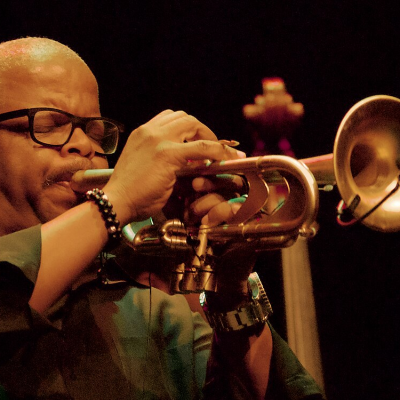Paul Morris is a graphic designer and writer who collects album art of the 1940’s and 1950’s. He finds his examples of influential mid-century design in the used record stores of Portland, Oregon.
In this edition, Paul invites readers to revisit the 1950s with images of fans holding and enjoying their albums.
__________
All vinyl lovers are invited to revisit the 1950’s, when LPs took over the music market. Covers of the day often portrayed fans who had made albums part of their lives.
I can really identify with this Ray Eberle cover, not because of the sedate party mood, but because the basement rec room is decorated with album covers. My own basement TV room is similarly decorated, though I have room for only six at a time. The mid-century suspended lights are great.
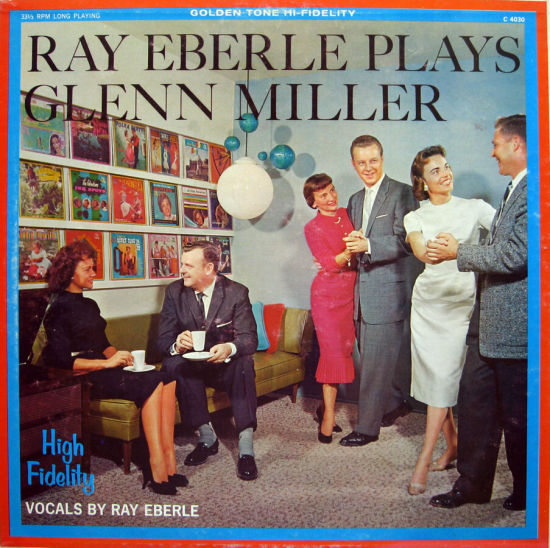
__________
“Hits by Hibbler” shows shoppers in a record store in about 1959. Somehow they don’t seem like Al Hibbler’s target audience, but who knows? Hibbler was Duke Ellington’s vocalist for eight years in the 1940s, and in the 1950s had a few hits. The seated man is in the listening booth, well decorated with albums. As this was a Decca record, the records on display all seem to be Deccas.
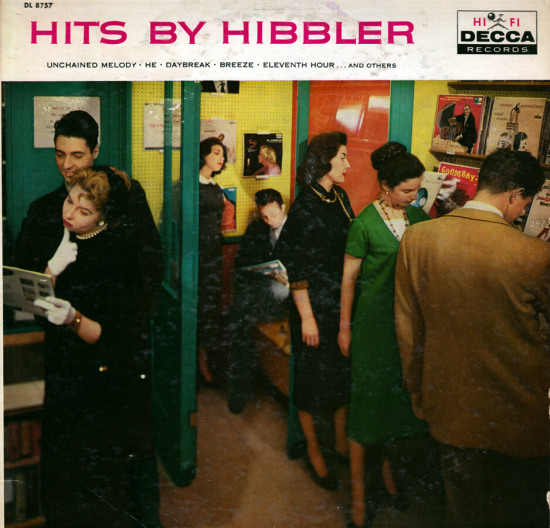
__________
Here the Ames Brothers are happy to see that their new album contains a song book with all the lyrics. Through the magic of the darkroom they’re looking at the photo of them looking at the album…The photographer, Wendy Hilty, was a male commercial photographer who died in 1978.
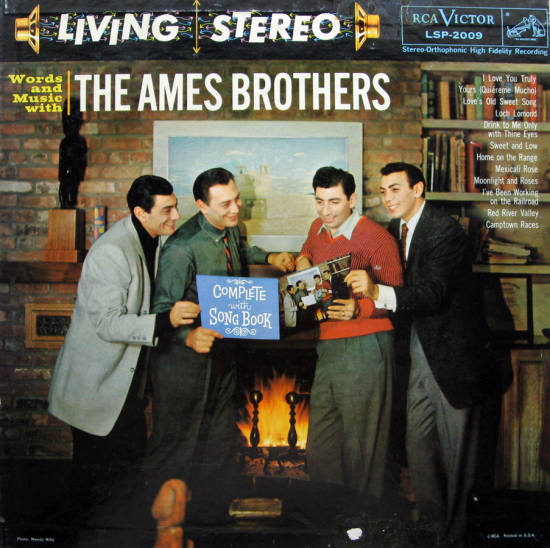
__________
The Four Freshmen’s dressing room is adorned with albums, by the Freshmen, natch. The upper-right record, “The Four Freshmen and Five Trombones,” was chosen for the cover of a coffee-table book of jazz album art.
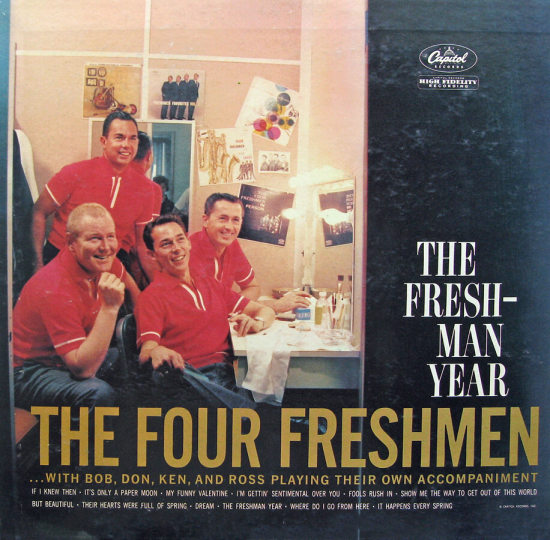
__________
Having Thelonious Monk, Henry Miller, and Jelly Roll Morton in the front row makes this extravaganza on the beach irresistible. There are numerous jazz classics and obscurities to be found in the assemblage. Paul Weller was the photographer and Paul Bacon the designer. Having enjoyed this photo for a time, you may ask, as I did, “Aren’t they going to get sand in the albums?”
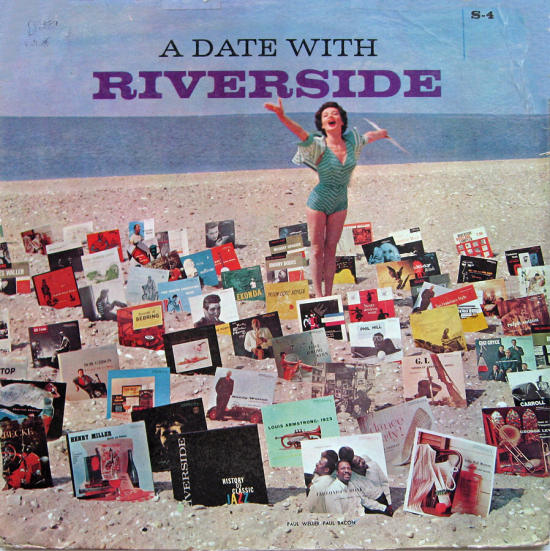
_________
This brings me to the other side of albums on album covers: people are neglecting, even trashing their records! I’ll pause for a moment to recall how the inner sleeves of LPs used to instruct us in record care. As a young record owner in the 1960’s I was no audiophile, but I took seriously the admonitions such as the ones below from Columbia. Don’t touch the grooves, buckle the record jacket, wipe with a soft, slightly damp cloth, keep in protective envelope when not in use, etc. (Actually I didn’t do the damp cloth routine.)
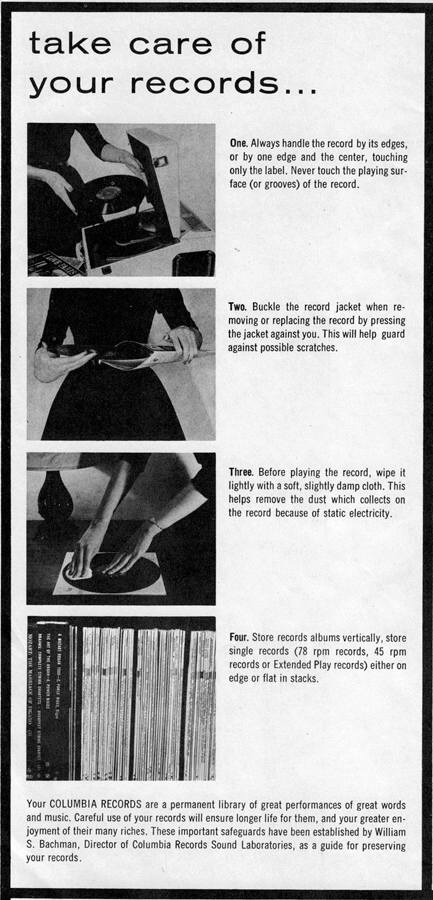
__________
But while the sound engineers were preaching record care, the photographers were going wild in the studios. The listener lounging on red velvet in this photo is eating jelly beans while browsing her extensive Stanley Black collection, plus two records are out of their jackets! The nice hi-fi set with three-band radio gets a credit: “Essex Phonograph by London.”
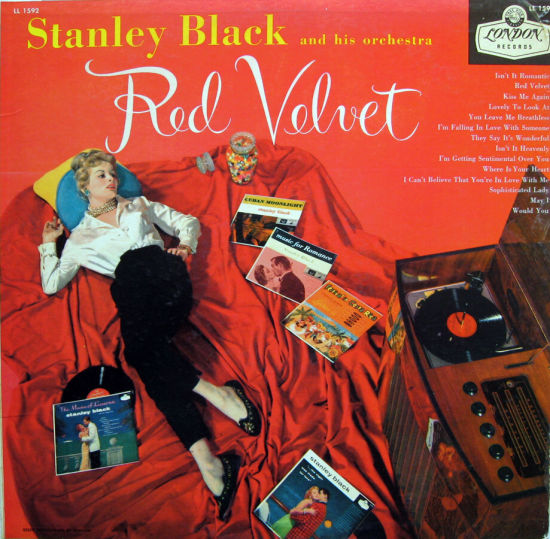
__________
This married lady should know you don’t use a record as a pillow. Her partner is pouring a nightcap of Budweiser as she smokes and lounges on a shag rug next to the portable record player. The label on the front shows the record was once owned by a guy in Brookings, South Dakota, and on the back is evidence that he may have had Sammy Kaye sign it for someone named Betty.
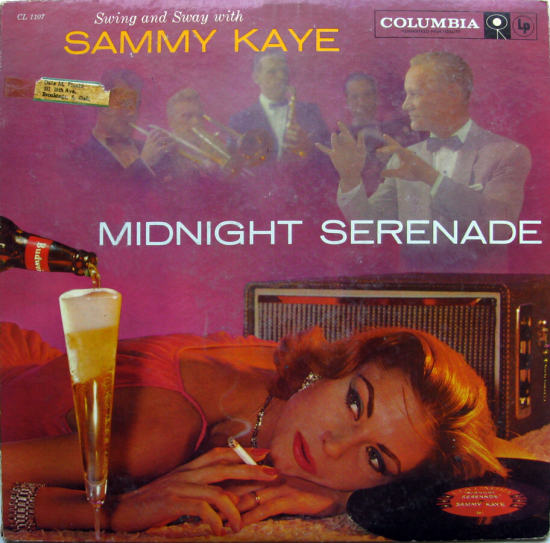
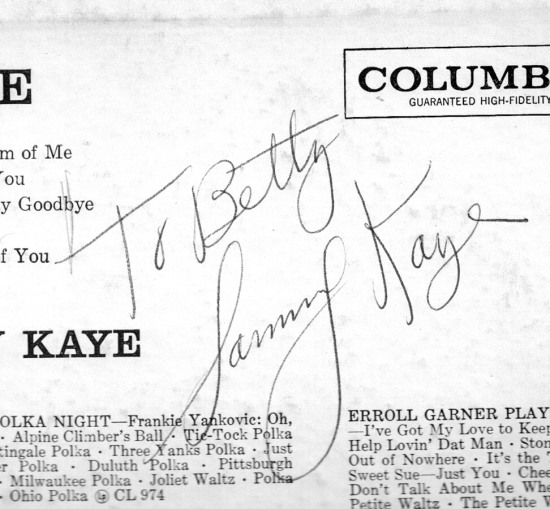
__________
These two have been launched into a vinyl fantasy by the music of Edmundo Ros, though they’re keeping their records in their jackets. The record player they imagine tromping on is credited: “Turntable and Pick-up by Fairchild.”
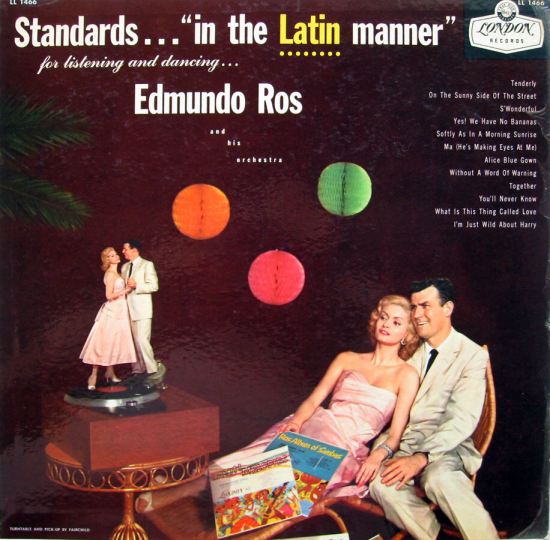
__________
It’s an album orgy! The photographer was seriously into vinyl, I’d say, but the happy young fellow is putting his foot on a record. His friend doesn’t care, as she smiles and touches the grooves of several Capitol albums. The songs are all hits of 1960.
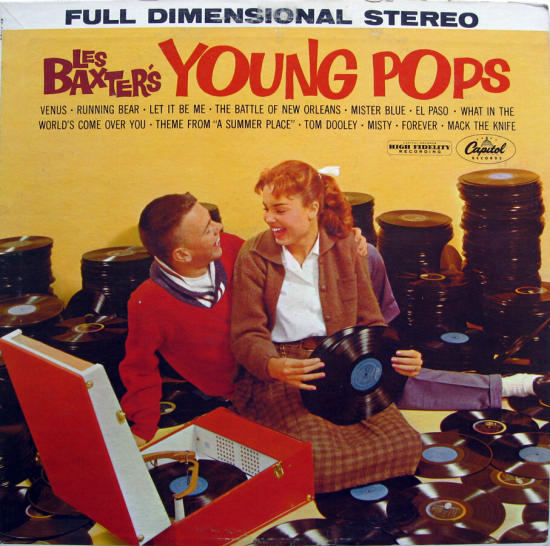
__________
And here Ralph Marterie is surrounded by levitating Mercury 45s. According to the liner notes, Marterie’s “exciting, swinging instrumental sounds” brought about “a rediscovery of the ballroom floor as a great place for recreation.”
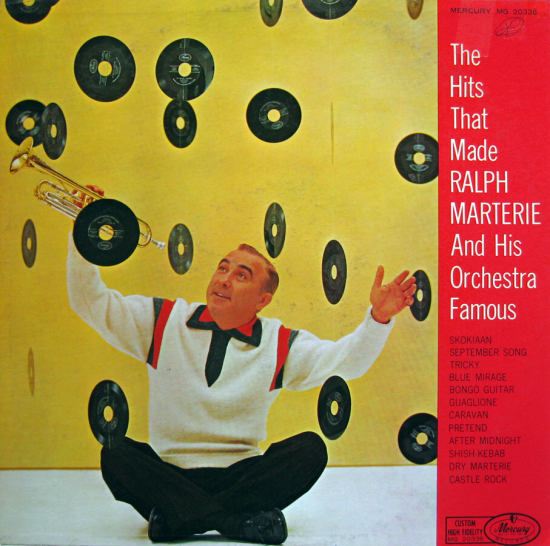
__________
Vinyl is coming back to the music scene, but we won’t see album art like this on today’s records.
Next time: the art of Alex Steinweiss/Piedra Blanca.
___
In Volume 1 of “Cover Stories,” Paul shared his collection of covers by Alex Steinweiss, known as the father of the record album cover, and for many years in charge of Columbia Records’ art department.
Volume 2 focused on Columbia covers
Volume 3 featured jazz illustrations from the early years of the record album







